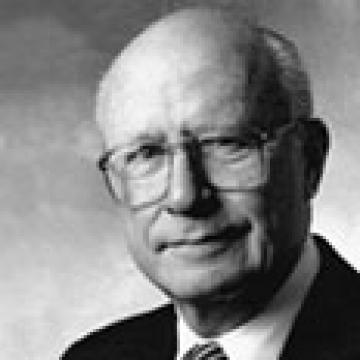Grover Cleveland: Family Life
In the White House, Grover Cleveland became one of the hardest working Presidents ever, doing his own paperwork and routinely working past midnight, often until two or three in the morning. He paid his own expenses, dispensed with luxuries such as the presidential yacht, cussed openly, and bemoaned the fancy White House cooking. "I must go to dinner," he wrote one evening in disgust, "and I wish it was to eat a pickled herring, Swiss cheese and a chop instead of the French stuff I shall find."
After his first two years in office as a bachelor President, Cleveland married Frances Folsom in 1886, becoming the first President to be married in the White House. Although Frances was almost thirty years younger than her husband, the two had a seemingly happy marriage and five children. As President and First Lady, they attracted considerable attention. Frances quickly became one of the most popular First Ladies since Dolley Madison and Julia Tyler. Millions of scarves, ornamental bottles, postcards, and other items bearing both their faces—or hers alone—appeared in public. Cleveland chaffed under the media crush and disliked his wife and family being subjected to such scrutiny. Frances, however, handled the attention with grace.
During his second term, Cleveland faced a medical scare that threatened to disrupt his presidency. He discovered a lesion in his mouth that his doctors diagnosed as cancer. So as not to panic the American people and the financial markets, Cleveland kept the ensuing operation a secret. In June 1893, aboard a friend's yacht, doctors removed the lesion while he was seated in a chair tied to the mast. A second, brief operation was performed in mid-July, after which Cleveland returned to his summer house to recuperate. He spent the rest of his life wearing an artificial jaw on his left upper side, which left his appearance and speech remarkably unaffected. The public did not learn of the President's medical scare until one of his doctors published an article about the episode in 1917, almost ten years after Cleveland's death.
